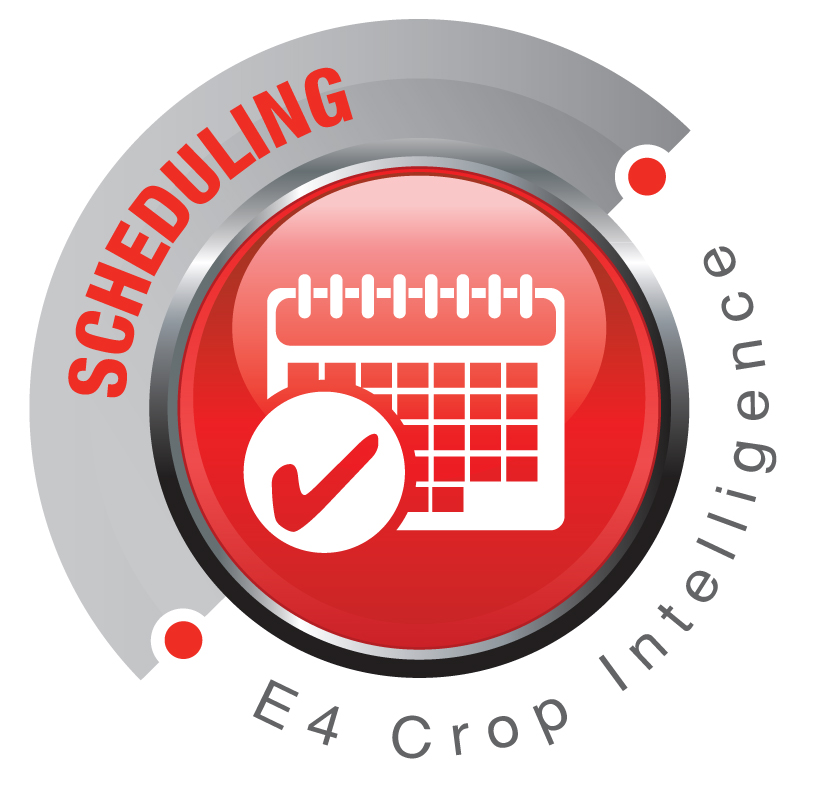Easily Keep Operations On Schedule
The E4 Scheduling software module offers a sophisticated, scalable way to track activities and activity assignments across multiple fields and farms. Customers record activity data, dates, applied product rates, or quantities manually or by uploading application data recorded by their onboard monitors. Standard reports show how predicted application quantities and costs (recorded in the E4 Crop Planning module) compare to the actuals, enabling customers to plan more effectively in the next crop cycle.
Retailers and large farming operations find the Scheduling module particularly useful for vendor management. Upcoming work is represented visually on a map, so customers can easily assign and reassign jobs based on proximity, saving valuable time and travel expenses. Vendors utilize the Schedule module directly, indicating if the job has been started, completed, or postponed and recording relevant notes about the work done.
To use this module, customers must also have a Crop Planning module.
How It Works
- Customers configure field parameters in the E4 Gateway module and plan field activities using the E4 Crop Planning module.
- If desired, customers create user accounts for activity providers, employees, and other stakeholders who may need to update activity data or receive activity-related communications.
- Customers assign activities, automatically scheduling reminder notifications (sent via text or email) to all applicable recipients.
- Activity providers log in to record details about the work done, e.g., date completed, applied quantities, work notes, etc.
Key Features & Benefits
Scalable To Meet Your Needs: Whether you have a few employees or many or contract with dozens of service providers or only a handful, your operation can benefit from the Crop Planning module. Used in conjunction with the E4 Gateway module (free to E4 customers), you can make the software available to as many users as you need.
Planned vs. Actuals: By analyzing your actual activity costs and product application rates relative to what you planned, you can be more prepared for the next crop cycle, buying what you need when prices are at their lowest.

